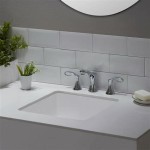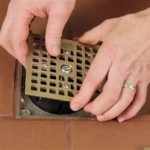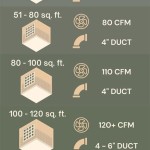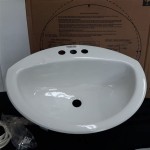Essential Aspects of Replacing Bathroom Floor Rotted In Kitchen Cabinets
Replacing bathroom floor rotted in kitchen cabinets requires a thorough understanding of the essential aspects involved in the process. These aspects include identifying the source of the rot, removing the damaged materials, preparing the subfloor, installing the new flooring, and preventing future rot. Understanding these aspects is crucial for a successful and long-lasting repair.
The part of speech for "Replacing Bathroom Floor Rotted In Kitchen Cabinets How To" is a verb phrase. It indicates an action or process, which is replacing the bathroom floor that has rotted in the kitchen cabinets. This action involves identifying the source of the rot, removing the damaged materials, preparing the subfloor, installing the new flooring, and preventing future rot.
Let's explore each of these essential aspects in more detail:
1. Identifying the Source of the Rot
The first step in replacing a bathroom floor rotted in kitchen cabinets is to identify the source of the rot. Common causes include water leaks from fixtures, pipes, or the roof, poor ventilation, or flooding. Identifying the source is crucial to prevent the recurrence of rot in the future.
2. Removing the Damaged Materials
Once the source of the rot is identified, the next step is to remove the damaged materials. This involves carefully removing the rotten flooring, subfloor, and any affected cabinetry. It's essential to remove all affected materials to prevent the spread of rot and ensure a solid foundation for the new flooring.
3. Preparing the Subfloor
After removing the damaged materials, the subfloor should be inspected for any signs of damage or weakness. Any damaged areas should be repaired or replaced. The subfloor should also be cleaned and dried thoroughly to prevent future rot.
4. Installing the New Flooring
Once the subfloor is prepared, the new flooring can be installed. The type of flooring used will depend on the specific requirements of the bathroom and kitchen cabinet area. It's essential to follow the manufacturer's instructions for proper installation to ensure a durable and water-resistant finish.
5. Preventing Future Rot
To prevent future rot, it's important to address the underlying cause of the previous rot. This may involve repairing leaks, improving ventilation, or installing a moisture barrier. Additionally, regular cleaning and maintenance of the bathroom and kitchen area can help prevent the accumulation of moisture and the development of rot.
Replacing bathroom floor rotted in kitchen cabinets involves a comprehensive approach that considers the essential aspects discussed above. By following these steps and addressing the underlying cause of the rot, you can ensure a successful repair and prevent the recurrence of this issue in the future.

How To Replace A Rotten Kitchen Cabinet Floor 8 Simple Steps

How To Repair Your Water Damaged Floor Cabana State Of Mind

How To Replace A Rotten Kitchen Cabinet Floor 8 Simple Steps

How To Fix Rotted Cabinet Bottom Floor Much Sink Install House Remodeling Decorating Construction Energy Use Kitchen Bathroom Bedroom Building Rooms City Data Forum

How To Replace Rotted Wood Under A Kitchen Sink Diy Guide Dengarden

How Do I Repair My Water Damaged Sink Cabinet Hometalk

Replace Sink Cabinet Floor

Repairing A Water Damaged Sink Base Cabinet Floor
When Repairing The Bottom Of Cabinet Below Kitchen Sink Do I Need To Take Damaged Section Out Or Can Simply Put Plywood On Top It Quora

Discover Everything You Need To Know About Cabinet Repair
Related Posts







